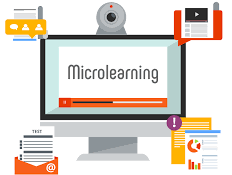In today’s fast-paced world, where time is a precious commodity and attention spans are increasingly fragmented, traditional approaches to learning and development are facing unprecedented challenges. Fortunately, amidst this disruption, a powerful solution has emerged: microlearning.
Microlearning is a transformative approach to education that delivers bite-sized chunks of content in a concise and focused manner, typically ranging from a few minutes to a maximum of fifteen minutes. This format is perfectly suited to the demands of the digital age, where learners seek information on-the-go and prefer to consume content in short, digestible bursts.
The efficacy of microlearning lies in its ability to cater to the needs of modern learners. By breaking down complex concepts into smaller, more manageable units, microlearning ensures that information is easily digestible and retains learners’ attention. Furthermore, its accessibility across various devices and platforms enables seamless integration into daily routines, allowing individuals to learn anytime, anywhere.
But the benefits of microlearning extend beyond convenience; they also have a profound impact on learning outcomes. Research has shown that short, frequent bursts of learning can lead to higher retention rates compared to traditional long-form content. This is due to the “spacing effect,” which suggests that distributing learning over time enhances memory consolidation and retrieval.
Moreover, microlearning facilitates just-in-time learning, enabling individuals to acquire relevant knowledge and skills precisely when they need them. Whether it’s a quick tutorial on a new software feature or a refresher on a critical procedure, microlearning empowers employees to address immediate challenges and enhance their performance in real-time.
From a corporate perspective, microlearning offers significant advantages. Its modular nature allows organizations to rapidly develop and deploy training materials, reducing time-to-competency and minimizing disruptions to workflow. Additionally, microlearning enables targeted training interventions, allowing companies to address specific skill gaps and align learning initiatives with strategic objectives.
As Chief Learning Officers (CLOs), it’s imperative to recognize the transformative potential of microlearning and integrate it into our organizational learning strategies. By leveraging microlearning principles, we can create dynamic and engaging learning experiences that resonate with today’s learners and drive tangible business results.
Conclusion
The power of microlearning lies in its ability to deliver relevant, accessible, and engaging learning experiences in the digital age. By embracing microlearning as a cornerstone of our learning and development initiatives, we can unlock the full potential of our workforce and thrive in an ever-changing world. Let’s harness the power of microlearning to empower individuals, enhance performance, and drive organizational success.

